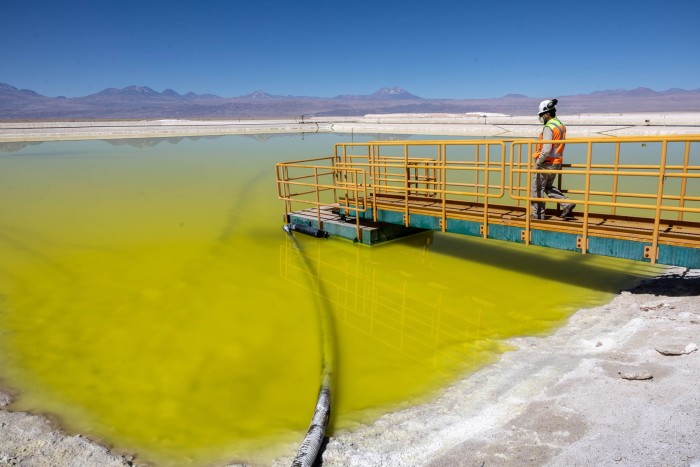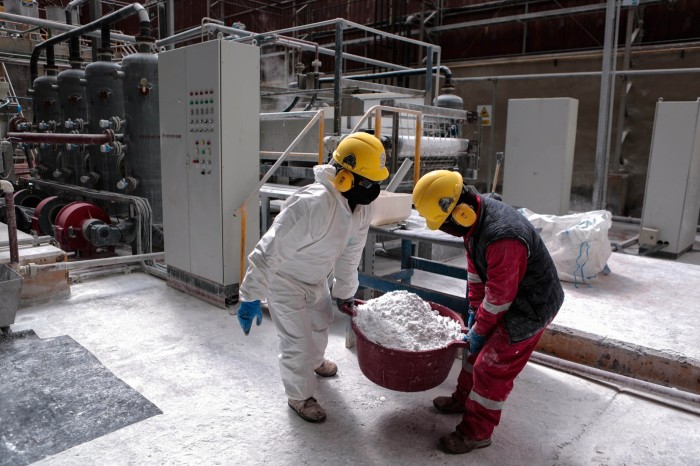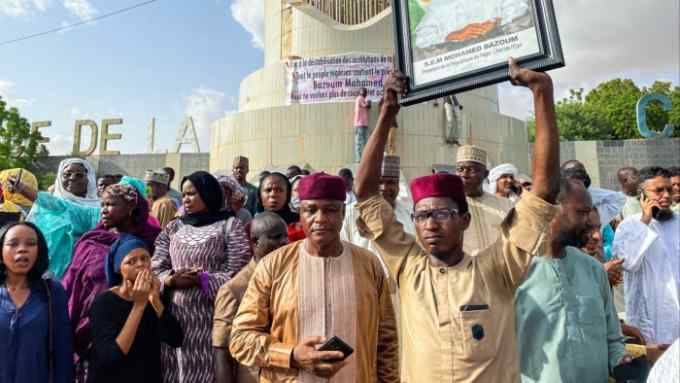Latin America has its best chance for a generation

Roula Khalaf, Editor of the FT, selects her favourite stories in this weekly newsletter.
Predictions of a bright new dawn for Latin America tend to elicit polite scepticism, at best. The region has disappointed citizens and investors alike over the past decade.
Its economies have barely grown and living standards have mostly stagnated or declined. South-east Asia has eclipsed it as an investment destination and a manufacturing hub. Former US diplomat Henry Kissinger famously dismissed Chile as “a dagger pointed at the heart of Antarctica” due to its supposed lack of strategic importance.
Yet Latin America today commands fresh attention because of its potential to help meet some of the 21st century’s biggest challenges: producing food, generating clean energy, extracting critical minerals, and fighting climate change.
Latin America has two-thirds of world lithium reserves and about 40 per cent of its copper. It accounts for 45 per cent of global agrifood trade, according to the EU, and its abundant stock of farmland and water could allow that to grow much further. It is home to the world’s largest surviving rainforest, the Amazon, and its diverse geography includes some of the best locations on the planet to generate solar and wind power.
This combination of strengths gives Latin America its best chance in a generation to lift its economies out of stagnation, make its people wealthier, and assume a bigger global role.
It also enjoys some other, less obvious, advantages in today’s troubled world: its states are not at war with each other; it is more democratic than any other developing region; and it is building soft power — latino music, food, art, and films have global audiences. In addition, digital nomads cite Mexico City, Medellín and Buenos Aires as among the world’s best cities for remote working.
In a region inured to jibes about being the eternal land of future promise, the key question is whether its governments can rise to the task.


Mexico, the region’s main manufacturing hub, stands out as the location of choice for companies wishing to move production away from China and close to the giant US market. In June, it elects a successor to President Andrés Manuel López Obrador, whose nationalistic bent and state-directed investment have crimped growth. Investors hope either López Obrador’s chosen successor, former Mexico City mayor Claudia Sheinbaum, or the opposition’s Xóchitl Gálvez, prove more investor-friendly and allow Mexico to capitalise on what ought to be a giant nearshoring boom.
In Brazil, leftist president Luiz Inácio Lula da Silva wants to make the region’s biggest economy a global leader on the environment and draw a wave of green investment in everything from carbon offsets to sustainable energy. Brazil, he pledged during a visit to the Gulf last year, will become the “Saudi Arabia of renewable energy in 10 years”.
Now in his third term, Lula will play a major foreign policy role, hosting the G20 in November and the COP30 environmental summit a year later. He believes Brazil, as a neutral and peaceful nation, can mediate in global conflicts.
In Argentina, investors have bid up stocks and sovereign bonds to levels unseen in years after the recent election of President Javier Milei. A libertarian economist, he has decreed an end to state economic controls and advocates unbridled capitalism. But it remains to be seen whether the Peronist-dominated congress and Argentina’s powerful unions allow him to sweep away a generous welfare state, labour protections, and a web of state companies. If Milei, the self-styled “anarcho-capitalist”, achieves even some of his goals, Argentina could harness much more of its enormous potential in agriculture, mining and hydrocarbons.
On the Caribbean coast, an oil boom has made Guyana one of the world’s fastest-growing economies and a significant exporter, an example which neighbouring Suriname is eyeing keenly. Guyana offers a reminder that some of the region’s smaller economies, such as Panama, Uruguay and the Dominican Republic, have been among its most successful in recent years.
Meanwhile, the exodus of seven million refugees in recent years from the shattered economy of once-wealthy Venezuela provides a vivid reminder of governments’ ability to destroy, as well as to build. Venezuela’s woes, and those of Cuba, Nicaragua and other failing states in the region, have contributed to the biggest migration crisis seen in the Americas. The millions of people fleeing north towards the US create a major problem for President Joe Biden in the year he seeks re-election.
Can Latin America rise to the opportunities offered by the early 21st century and return to a path of prosperity?
In 1992, Mexican writer Carlos Fuentes compared the region’s history to the construction of a tall building that is never completed despite gradual, constant progress. Latin America, he wrote, was “advancing yet unfinished, energetic yet fraught with seemingly insoluble problems”.
Latin Americans hope the 21st century’s new opportunities will allow them to prove Fuentes wrong.

Comments